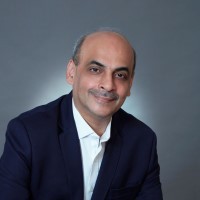Next up
Pre-Operative Clinical Findings and Imaging
Continuing in
Goel’s Technique of C1-C2 Fixation
This is a preview of subscription content
Your browser needs to be JavaScript capable to view this video
Try reloading this page, or reviewing your browser settings
The presented video explains the technique of posterior fixation of the atlantoaxial joints in patients with atlantoaxial instability. Prof. Atul Goel has pioneered the method and is the gold standard used to fix the craniovertebral junction. The technique consists of opening the C1 C2 joint, denuding the joint’s articular cartilage, putting bone chips into the joint, and performing a plate and screw fixation of the region. The C1 screw is through the lateral mass of C1, and the C2 screw engages the C2 pedicle. It demonstrates the nuances to perform a solid atlantoaxial fixation. The targeted audience includes neurosurgeons and spine surgeons. The viewer will learn the tricks for performing an ideal C1-C2 fixation.
Introduction
The presented video explains the technique of posterior fixation of the atlantoaxial joints in patients with atlantoaxial instability.
About The Authors

Dr. Abhidha Shah is an assistant professor at the neurosurgery department at King Edward memorial hospital and Seth G.S. Medical College. She serves as an associate editor of ‘Journal of Craniovertebral Junction and Spine’ and the ‘International Journal of Neuroscience.’ She has more than 125 peer-reviewed international and national publications and has written 20 book chapters. She has been awarded the Vesalius award and the Women in Neurosurgery – Greg Wilkins – Barrick Chair – Visiting International Surgeon award by the American Association of Neurological Surgeons. She has a particular interest in the anatomy of the white fibers of the brain and intra-axial surgery related to anatomy and function. She has also been awarded the Indian Society of Neuro-oncology President’s award for her clinical research on this subject.

Prof. Atul Goel is the chairman of the neurosurgery department at King Edward memorial hospital and Seth G.S. Medical College since 1998. Prof. Goel has written over 700 articles finding space in Pubmed. Prof. Goel has vast surgical experience on several complex issues. He has written two books published by the leading medical books publisher (Churchill Livingstone in 1997 and Thieme publishers in 2011). He has published over 180 articles presenting new (small and big) surgical techniques, more than 30 articles introducing philosophical and spiritual issues about neurosurgery. He is currently serving as the president of the craniovertebral junction and spine society. He has been awarded the eminent medical teacher, Dr. B.C. Roy National Award, Dandy medal for distinguished neurosurgery services-2018, Outstanding contribution award- Chinese society of Neurosurgery-2019, and International ambassador award by Congress of Neurological Surgeons, San Francisco 2019.
About this video
- Author(s)
- Abhidha Shah
- Atul Goel
- DOI
- https://doi.org/10.1007/978-981-19-3733-0
- Online ISBN
- 978-981-19-3733-0
- Total duration
- 20 min
- Publisher
- Springer, Singapore
- Copyright information
- © The Editor(s) (if applicable) and The Author(s), under exclusive license to Springer Nature Singapore Pte Ltd. 2022
Video Transcript
[MUSIC PLAYING]
This video demonstrate Goel’s Technique of C1-C2 Fixation. Basically, it’s posterior fixation of the atlantoaxial joint. As we all know, the atlantoaxial joint is the most mobile joint of the entire spine. And it is potentially the most liable to become unstable. Hence, learning the technique of fixing the atlantoaxial joint forms an important armamentarium for a neurosurgeon.
The treatment of patients with atlantoaxial dislocation is a surgical challenge. And once you achieve a successful outcome for these patients, this surgical outcome is extremely gratifying. However, at the same time, the complications of surgery can be potentially lethal. Whilst a successful surgery has a great potential to give a new life to the patient and to their families, any complication can be devastating. Hence, it is absolutely mandatory to understand the anatomy of the craniovertebral junction before embarking upon its surgery.
Now, what are the key points while performing a posterior atlantoaxial fixation? The key points involve opening of the atlantoaxial joint, denuding of the articular cartilage, stuffing of bone graft chips into the joint cavity, and direct insertion of screws into the facets of atlas and axis. These steps form the basis of Goel and Laheri technique of atlantoaxial stabilization.
The position of the patient while performing this surgery is a head high position under cervical traction. This position provides a stabilization of the head in an optimum surgical position. It actually keeps the head floating and avoids pressure over the face and eyeballs during surgery.
The next important step is a sectioning of the C2 ganglion. This sectioning is 100% safe and can be done whenever the exposure of the atlantoaxial facetal articulation is less than complete.
When done properly, a sectioning of the C2 ganglion provides a window to the atlantoaxial joint. The next important step is obtaining of the bone graft. We always use an autograft that is derived from the iliac crest.
After the procedure is performed, all the muscles attached to the C2 spinous process are sectioned to avoid movements in the region. This is another key step while performing the C1-C2 fixation.
Direct handling of the facets and their manual manipulation enhances the scope of use of atlantoaxial fixation for cases with atlantoaxial instability, basilar invagination, irreducible atlantoaxial dislocation, rotatory atlantoaxial dislocation, and for cases with extensive trauma to the region that results in displacement of facets.
Now let’s go ahead and see the surgical technique of Goel’s technique of C1-C2 fixation.